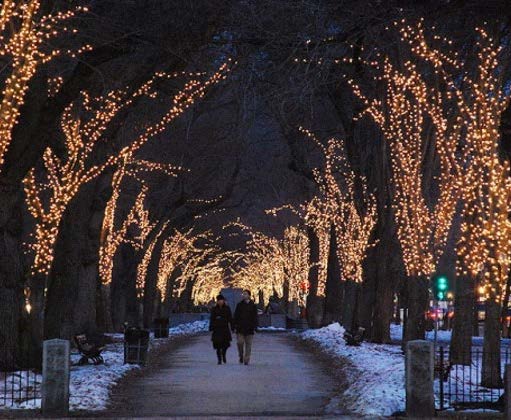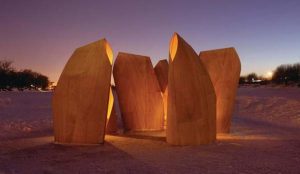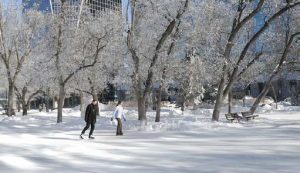Winter Design and Programming

Designing for winter helps to animate the campus during the winter months, which are the busiest periods of the academic year for the University. It supports the development of a healthy and active environment by designing spaces so that they can be used year round. Designing for winter requires building flexibility into design, to allow for changes in space usage as seasons change. It plans for the use of the Campus as a winter destination and playground for the University and community after hours. It is also a way in which to build identity with winter activities, and undertake designs that are unique to the University.
Providing shelter, maximizing sunshine, and promoting active living during the cold months can be achieved through many creative strategies, both in the design of the built form, as well as the design and organization of the landscape and the elements within.
Policies:
- Open spaces should be designed to maximize southern exposure to take advantage of sunlight. The massing and design of surrounding structures should maximize sunlight penetration to these spaces.
- Open spaces should include mitigation measures from wind, snow, and rain, such as trees, canopies from buildings, and stand alone structures heated winter huts, or art.
- Plant deciduous trees along the edges and in grouped patterns within open spaces to act as wind breaks. Evergreen trees should only be planted as windbreaks in the forested landscaped open spaces and should not block view corridors to and through spaces.
- Streets, sidewalks, and plazas or hard-surface spaces should be designed for efficient snow clearance in winter.
- Use collected snow from snow removal to create toboggan hills and snow mounds for winter play and to block winds.
- Consider the creation of ice rinks and other winter sports and celebrations in larger public spaces such as the field or the quad open spaces.
- Create year-round patios that are comfortable throughout the seasons. Use durable wood as materials for comfortable seating in the winter.
- Create a program for ongoing winter activities and opportunities to engage the community such as festivals, winter design competitions.


